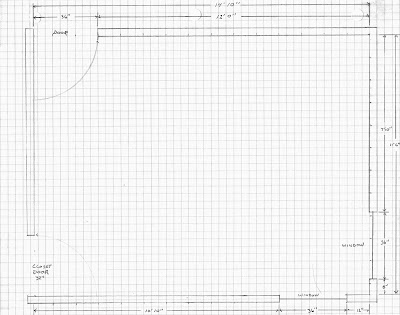Designing a Model Railroad Layout requires many decisions
*UPDATE: I picked the site, and am working on layout design!*
Having moved into a new house that has enough room for an O gauge model railroad layout, I've got a major decision to make: location, location, location.
For possible locations, I have to decide between the third garage stall, or one of the spare bedrooms, that also would double as the office for my freelance writing work. Both sites have pros and cons:
Garage Model Railroad Layout:
Pro:
- More space;
- Less worry about mess-making
Con:
- May be difficult to keep cool in a New Mexico summer;
- Requires building a wall to separate it from the other stalls;
Spare Room Model Railroad Layout:
Pro:
- Climate controlled;
- Easier access may encourage more frequent use;
Con:
- Less space;
- More worry about mess-making;
To assist with the decision-making process, I've been looking at classic and new layouts, trying to find one that just begs for one space over the other. Anyone who has searched O Gauge layout designs will attest, they tend to fall into two categories: 4x8 plywood sheet spaghetti bowls, or mammoth, meandering pikes that would require an a vacant ICBM silo to fit.
So, it's almost a certainty that a published plan must be adapted to the space available. So you must look at published model railroad layout plan not as the finish point, but the starting point of creating your own pike.
I look for features I am interested in recreating, and how I can increase or decrease the plan to fit the space I have. In my case, I want a model railroad layout that offers continuous running, preferably for two trains, but also has operational features such as sidings. I'd also like a railroad yard, but will probably have to settle for a passing track with a spur. Reversing loops would be nice so I can turn my model train locomotives with out relying on the "hand of God" to pick them up and flip them.
That's a lot to ask for a model railroad layout that must fit in a 14 x 8 kidney-shaped area in the spare room, or the slightly larger spare garage stall. So, I've been surfing the 'net looking for inspiration. One particularly good site I've found is
Mark DiVecchio's Lionel O-Gauge Train Layouts. He chronicles building his latest layout with a clear set of photos and drawings showing how he took the layout he had, and using a published plan as a starting point, adapted the two into a stunning O gauge model railroad layout in his garage.
Of course, he had more room than I do, so I still have a lot of work to do, but his page inspired me to keep plugging along, and reach a solution to my model railroad decisions.
*UPDATE: I picked the site, and am working on layout design!*









